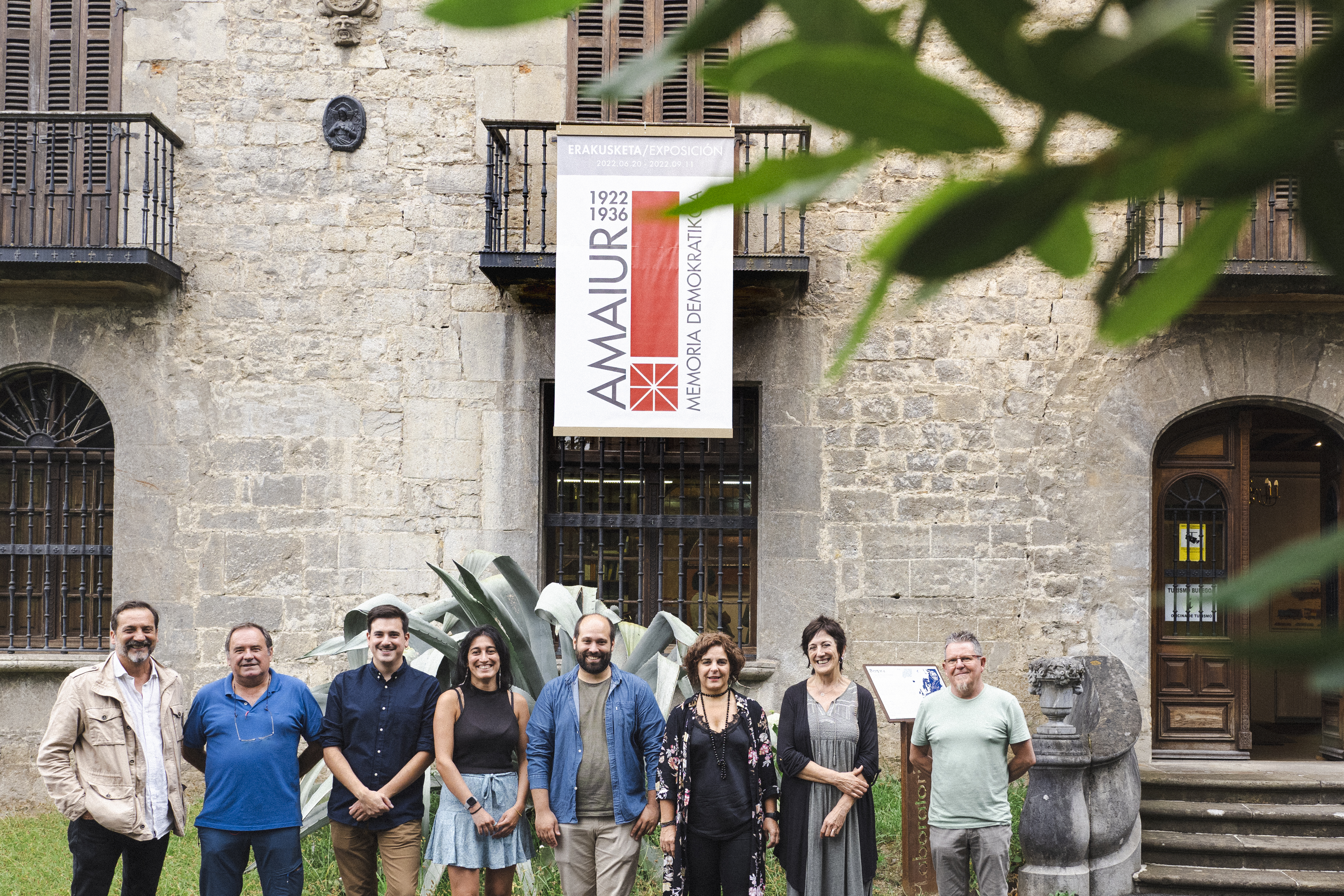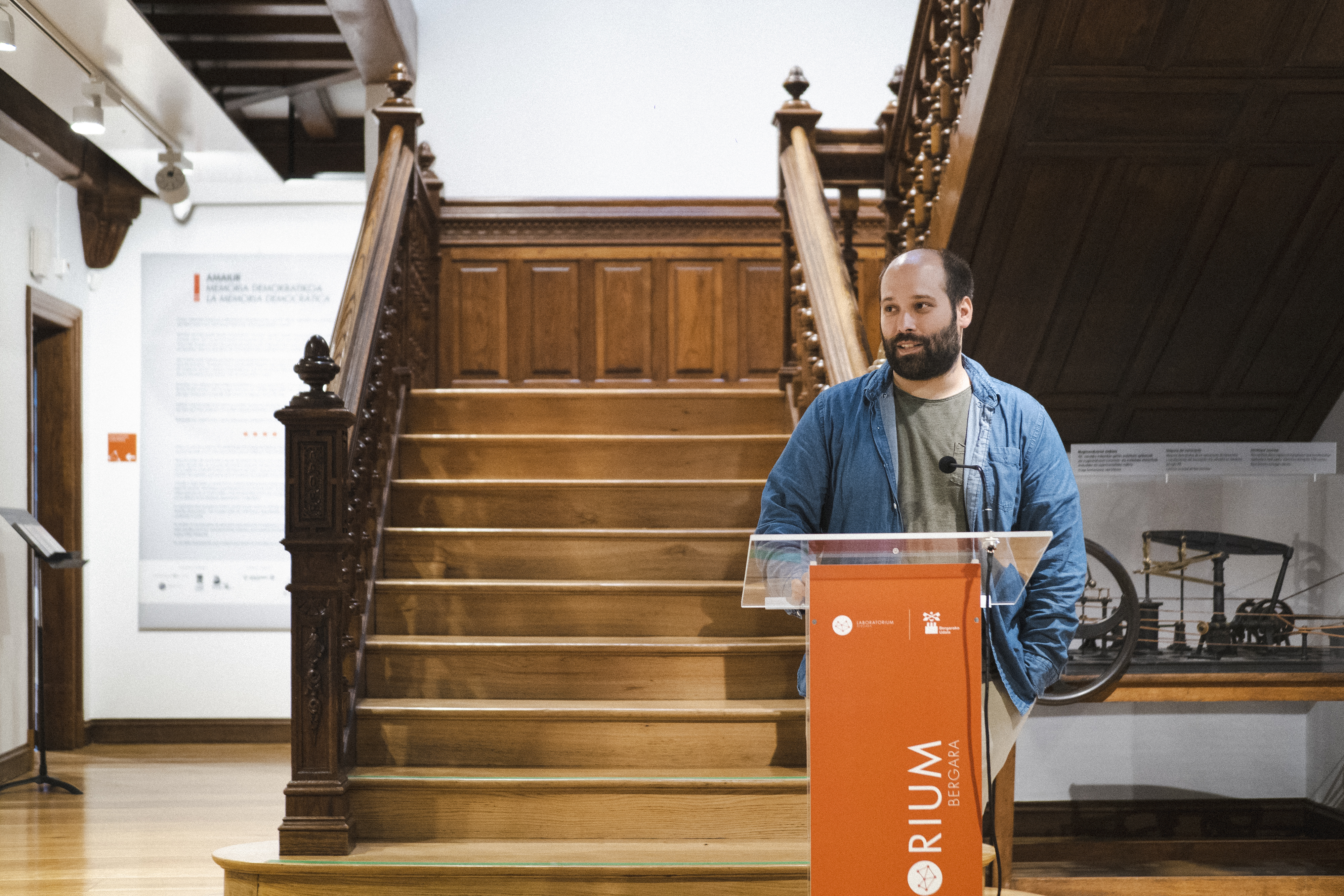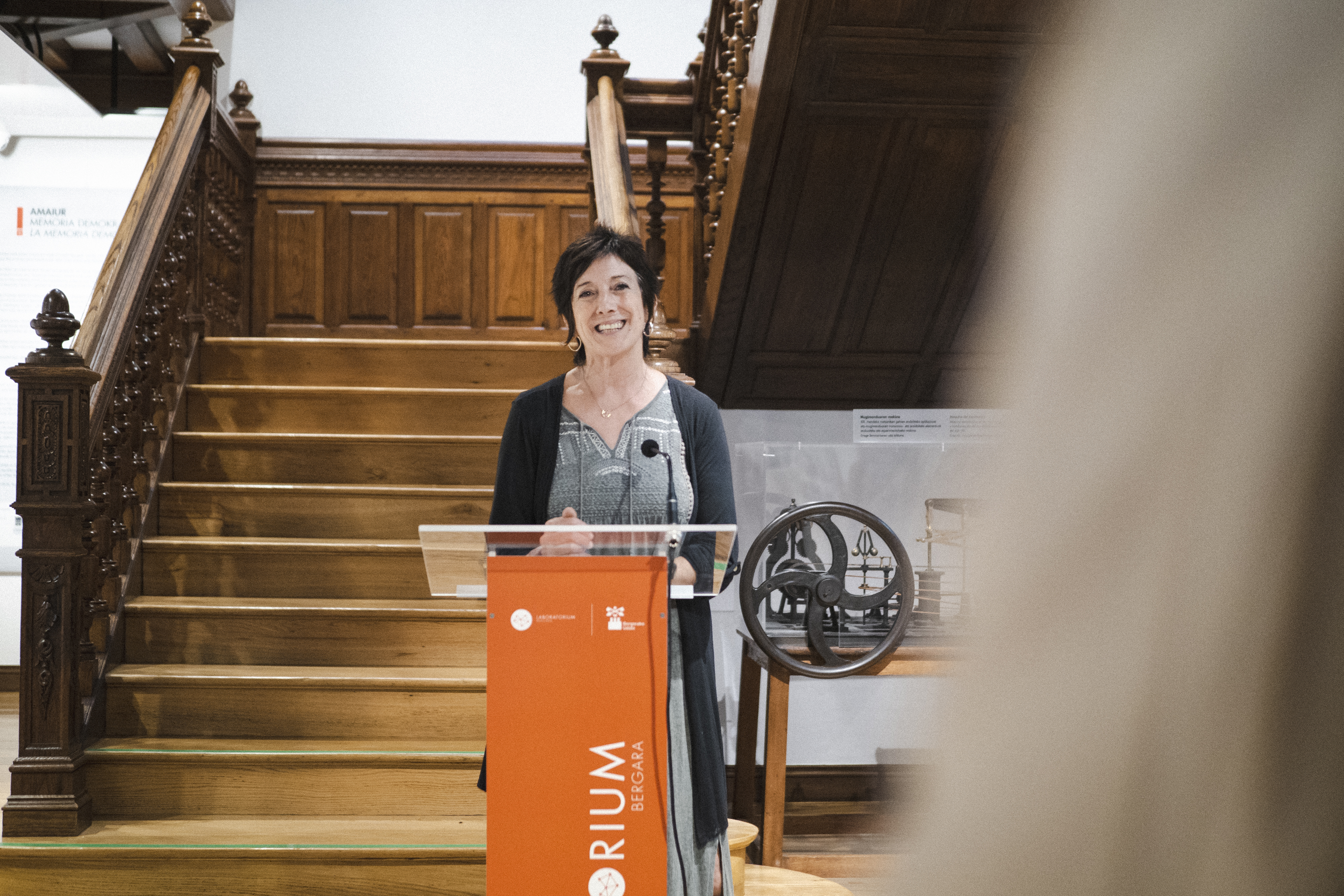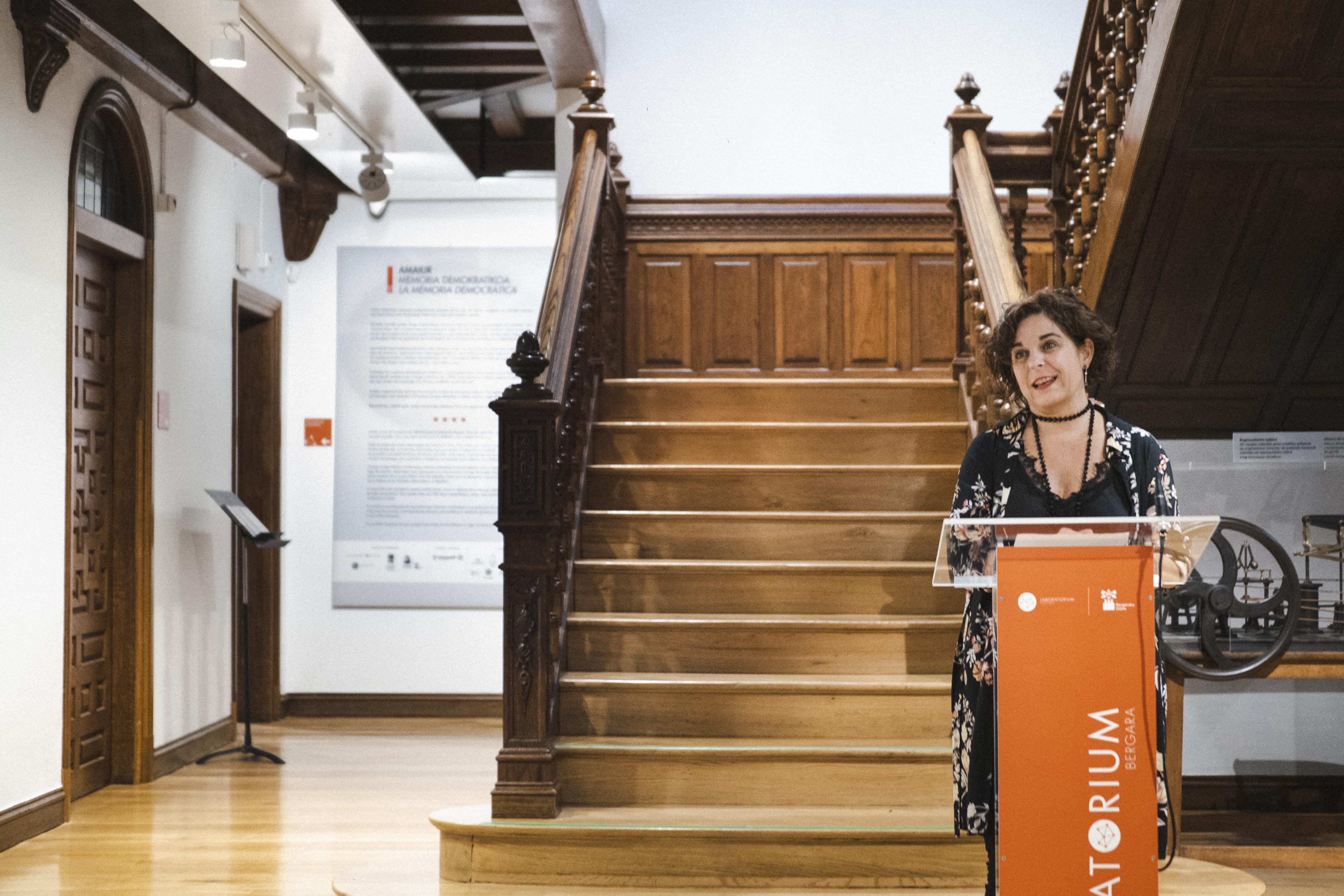An exhibition on Amaiur's democratic memory opens at the Laboratorium museum in Bergara.
From 20 June, the Laboratorium Museum in Bergara will be hosting the exhibition 'Amaiur 1922-1936 Democratic Memory'. It is a temporary exhibition that narrates the historical trajectory of this reference place of memory in our history. It will be in Bergara between June 20 and September 11.
The exhibition is organized by the Laboratorium Museum, the Olaso Tower Foundation and the Bergara City Council, and curated by the Aranzadi Science Society. Representatives of the four entities participated in the presentation made at the laboratorium.
The deputy mayor of Bergara, Ainhoa Lete, has made reference to the social nature of the Museum and the collaboration between the different agents. "At Laboratorium we are used to holding science-related exhibitions and we associate our activity especially with science, innovation and technology, but the museum also goes beyond that, and makes room for our history, art... making many other subjects available to the public through dissemination. In relation to this exhibition, I would also like to highlight the idea of collaboration that we have mentioned on so many other occasions.
The Mayor of Bergara, Gorka Artola, links the exhibition to the work being carried out by Bergara Town Council in the recovery of memory. "We are working to build the Bergara of the future, but to move forward it is essential to look back, to know the history, to recognise it, to recover memory. In Bergara we are working in this sense, among others, with Aranzadi, and now we are going to make room for the history of Euskal Herria through the museum."
The Laboratorium received the proposal for this exhibition through the foundation the Olaso Tower Foundation. Maite Aristegi, member of the Foundation's Board of Trustees, said that "Amaiur is an essential symbol of the Basque narrative, which explains how far we Basques are willing to go in defence of our freedoms. As Lauaxeta said, everything mus be given to the beloved freedom, and that is what the members of the Amaiur battalion did in the Amaiur castle and did again in the war of 1936"
Maite Errarte, from the Aranzadi Science Society, explained the details of the exhibition. She stresses that the construction of the Amaiur monolith or the fact that "a battalion of the Basque Army that is called Amaiur is no coincidence. Amaiur is a space present in our collective imagination and this exhibition aims to go to the roots and to the reason for the formation of that memory. Places of memory emerge between history, truth and myth, from which each of us creates our own narratives obout them."
Amaiur, a place of memory
Every country in the world has places of memory around which, for various reasons, feelings of all kinds are concentrated, sometimes conflicting, but which arouse the interest of citizens. Amaiur is one of them. It is when a historical place arouses so many different feelings that it acquires its full symbolism and dimension as a place of memory.
The aim of this exhibition is to present in a synthetic way how Amaiur was understood by a generation that fought for the defence of democratic freedoms and the Republic at the beginning of the 20th century. This is the case of such important figures in history as the humanist and politician Arturo Campión (1854-1937); the writer and politician Telesforo Monzón (1904-1981); or the politician and feminist Bittori Etxeberria (1908-1997)
Likewise, one of the battalions that took part in the resistance during the Civil War was given the name of "Amayur"; this was an act of homage to the resistance that defended the castle of Amaiur against the best militarily trained troops and was loyal to the legitimate regime, in the context of the conquest of Kingdom of Navarre.
This exhibition aims to be a humble gesture of reparation to recognise the suffering and the violation of the human rights of all those people, mostly anonymous, who assimilated the resistance of Amaiur to their resistance to Franco's military uprising. This was undoubtedly the generation that made Amaiur a place of memory.
The exhibition is supported by several organisations
It has the collaboration of the Gaztelu Society of Amaiur, the village of Amaiur, the Baztan Town Council, The Ministry of Culture and Sport of the Spanish Government, the Sabino Arana Foundation, Irujo Etxea, the Javier Ciga Foundation, the Department of Basque Studies of the University of Nevada and the University of the Basque Country.
Guided tours
During the months of July and August, 11:00 and 12:30. This offer will be added to the 5 options offered by the Bergara tourist office and it will be up to the people who are there at the time to choose which one to take. They can also be expressly requested in advance, like the rest of the guided tours.









